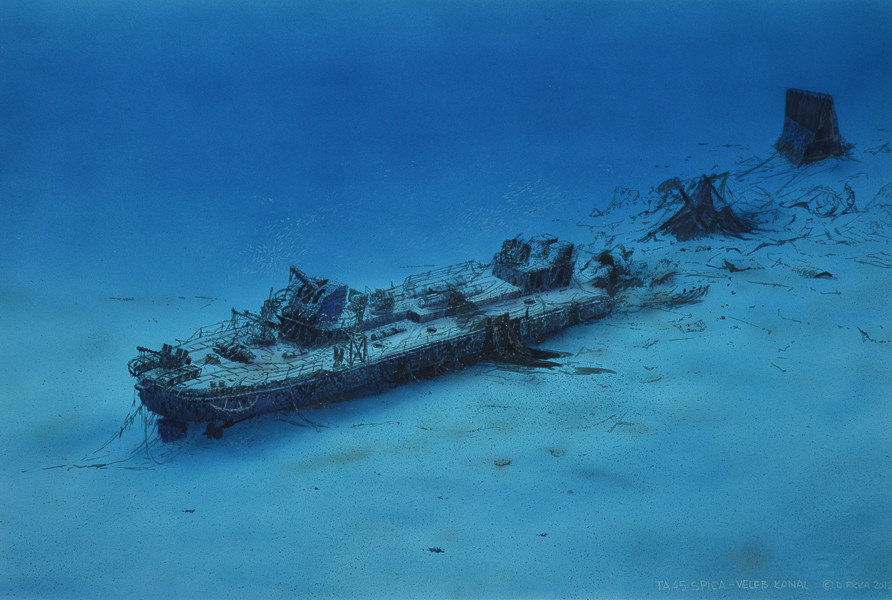
TORPEDO BOAT TA 45 SPICA
DEPTH: 52 - 60 m
SKILL: Expert
TA 45 (ex-Spica); escort destroyer; German Navy
Built: 1944, Cantieri Navali di Quarnaro, Rijeka, entered service 8.9.1944 9. 1944
Sunk: 13th April 1945 (by the British torpedo boats)
Dimensions: l=82.26 m, w=8.6 m, h=2.8 m
Coordinates: 45.09058° N, 14.76025° E
Location: Vinodol Channel
Access: 2/5 access is solely by boat (the location is in the open sea)
Visibility: 3/5 highly variable, occasionally exceptional
Current: 3/5 moderate
Flora and fauna: 4/5 varied life on and around the wreck, occasionally specimens of large fish
HISTORY:
The TA 45, the former Italian torpedo boat Spica, belonged to the modern Italian torpedo boat class Ariete, which was designed just before the Second World War. It was intended for battle against light enemy naval forces, submarines and motor torpedo boats as well as escorting convoys, and it could also serve in the deployment of mines. The ships kept their names, however they were assigned the German designation TA
The TA 45 Spica entered German service on 8th September 1944, but only from 23rd November 1944 was it fully equipped . The torpedo boat TA 45 participated in many mine-laying missions as well as the escorting of convoys until the end of March 1945, when as one the few remaining functioning warships, it was held in reserve for the expected landing of Allied Forces on the eastern coast of the Adriatic.
On its last mission the TA 45 sailed on 10th April 1945 together with the TA 40 Pugnale. It was needed in order to carry out the escort and protection of artillery tank carriers in the Velebit Channel.
The commander of the flotilla on 11th April 1945 embarked from Trieste and arrived in Rijeka without problems. The ships were placed in the Bay of Bakar, where they were well hidden due to the steep surroundings of the bay. The intention was to start the mission in the evening. However, over the radio link a command came that the mission had to be delayed for the next 24 hours, therefore the likelihood of this mission’s success was reduced.
In the evening hours the ships’ engines were started, and then right at midnight on Friday, 13th April 1945, the ships left Bakar Bay. With a starry night sky and full moon the weather was exceptionally unfavourable for such a mission in the island region. The ships sailed through the Velebit Channel towards the south, and in its southern straight passage they were suddenly attacked, in a crossfire.
The torpedo boat TA 45 was sunk by British torpedo boats and motor gunboats which were waiting in ambush near the cape of Glavina on the island of Krk. At the entrance of the Vinodol Channel they easily found the torpedo boats, as they had access to effective American radars, and they had waited for the torpedo boats to come closer to within 400-500 metres. The fired torpedoes missed the lead torpedo boat the TA 40, but the TA 45 was not as lucky and in only 3-4 minutes it ended up at the bottom of the sea. The ship embarked with a crew of 156 people. Altogether 76 were saved, and for 80 members of the crew all trace was lost. After this disaster, the Germans were left with only one working torpedo boat for the defence of the last lost positions.
WRECK CONDITION AND DIVING:
In the time between 1983 and 1991 we dived on the wreck several times and found all of its parts. The bow part is split into several pieces. The central part of the hull is almost completely unrecognisable and it lies sprawled on its side. The visibility is very rarely more than 2-3 metres. The very top of the bow lies is the westernmost part of the wreck and it is turned with its keel towards the surface. The rear section is completely intact and appears very impressive.
At the stern, immediately behind where the ship was broken, there is a small raised structure, which was the engine control station, and on its roof there is a four-barrelled anti-aircraft gun. Swimming towards the stern we come across the torpedo launcher with two tubes, between which is a seat for the sailor who operated the torpedo launcher and which is still visible. In good visibility under the stern two propellers and the rudder can be seen. Wherever we turn, there are large shoals of small silvery fish which obscure our view, however in the interior we can be met by very large specimens of conger eels. Large red groupers swim all around. All the entrances to below decks are for the most part very narrow and muddy, so entering the enclosed spaces is not without danger. The only wider entrance through which it is possible to enter is where the ship was ruptured, as there the deck was ripped open and the hole from the damage is in some parts several metres wide. Due to the muddiness and all sorts of debris it is not possible to enter the interior without special and thorough preparations.
The description and illustrations are a courtesy of Danijel Frka and Jasen Mesić. Buy the whole book here: https://shop.naklada-val.hr/product_info.php?products_id=561
Built: 1944, Cantieri Navali di Quarnaro, Rijeka, entered service 8.9.1944 9. 1944
Sunk: 13th April 1945 (by the British torpedo boats)
Dimensions: l=82.26 m, w=8.6 m, h=2.8 m
Coordinates: 45.09058° N, 14.76025° E
Location: Vinodol Channel
Access: 2/5 access is solely by boat (the location is in the open sea)
Visibility: 3/5 highly variable, occasionally exceptional
Current: 3/5 moderate
Flora and fauna: 4/5 varied life on and around the wreck, occasionally specimens of large fish
HISTORY:
The TA 45, the former Italian torpedo boat Spica, belonged to the modern Italian torpedo boat class Ariete, which was designed just before the Second World War. It was intended for battle against light enemy naval forces, submarines and motor torpedo boats as well as escorting convoys, and it could also serve in the deployment of mines. The ships kept their names, however they were assigned the German designation TA
The TA 45 Spica entered German service on 8th September 1944, but only from 23rd November 1944 was it fully equipped . The torpedo boat TA 45 participated in many mine-laying missions as well as the escorting of convoys until the end of March 1945, when as one the few remaining functioning warships, it was held in reserve for the expected landing of Allied Forces on the eastern coast of the Adriatic.
On its last mission the TA 45 sailed on 10th April 1945 together with the TA 40 Pugnale. It was needed in order to carry out the escort and protection of artillery tank carriers in the Velebit Channel.
The commander of the flotilla on 11th April 1945 embarked from Trieste and arrived in Rijeka without problems. The ships were placed in the Bay of Bakar, where they were well hidden due to the steep surroundings of the bay. The intention was to start the mission in the evening. However, over the radio link a command came that the mission had to be delayed for the next 24 hours, therefore the likelihood of this mission’s success was reduced.
In the evening hours the ships’ engines were started, and then right at midnight on Friday, 13th April 1945, the ships left Bakar Bay. With a starry night sky and full moon the weather was exceptionally unfavourable for such a mission in the island region. The ships sailed through the Velebit Channel towards the south, and in its southern straight passage they were suddenly attacked, in a crossfire.
The torpedo boat TA 45 was sunk by British torpedo boats and motor gunboats which were waiting in ambush near the cape of Glavina on the island of Krk. At the entrance of the Vinodol Channel they easily found the torpedo boats, as they had access to effective American radars, and they had waited for the torpedo boats to come closer to within 400-500 metres. The fired torpedoes missed the lead torpedo boat the TA 40, but the TA 45 was not as lucky and in only 3-4 minutes it ended up at the bottom of the sea. The ship embarked with a crew of 156 people. Altogether 76 were saved, and for 80 members of the crew all trace was lost. After this disaster, the Germans were left with only one working torpedo boat for the defence of the last lost positions.
WRECK CONDITION AND DIVING:
In the time between 1983 and 1991 we dived on the wreck several times and found all of its parts. The bow part is split into several pieces. The central part of the hull is almost completely unrecognisable and it lies sprawled on its side. The visibility is very rarely more than 2-3 metres. The very top of the bow lies is the westernmost part of the wreck and it is turned with its keel towards the surface. The rear section is completely intact and appears very impressive.
At the stern, immediately behind where the ship was broken, there is a small raised structure, which was the engine control station, and on its roof there is a four-barrelled anti-aircraft gun. Swimming towards the stern we come across the torpedo launcher with two tubes, between which is a seat for the sailor who operated the torpedo launcher and which is still visible. In good visibility under the stern two propellers and the rudder can be seen. Wherever we turn, there are large shoals of small silvery fish which obscure our view, however in the interior we can be met by very large specimens of conger eels. Large red groupers swim all around. All the entrances to below decks are for the most part very narrow and muddy, so entering the enclosed spaces is not without danger. The only wider entrance through which it is possible to enter is where the ship was ruptured, as there the deck was ripped open and the hole from the damage is in some parts several metres wide. Due to the muddiness and all sorts of debris it is not possible to enter the interior without special and thorough preparations.
The description and illustrations are a courtesy of Danijel Frka and Jasen Mesić. Buy the whole book here: https://shop.naklada-val.hr/product_info.php?products_id=561


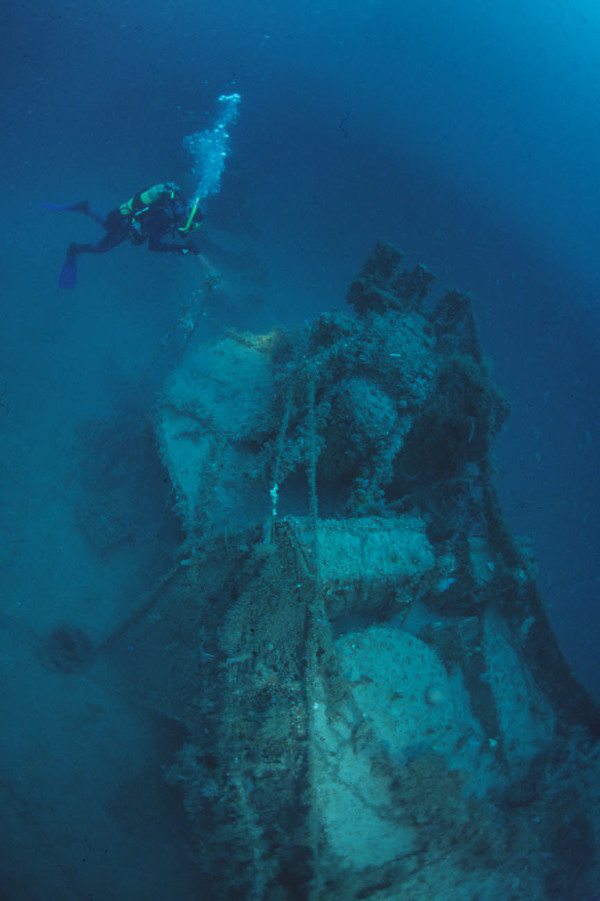
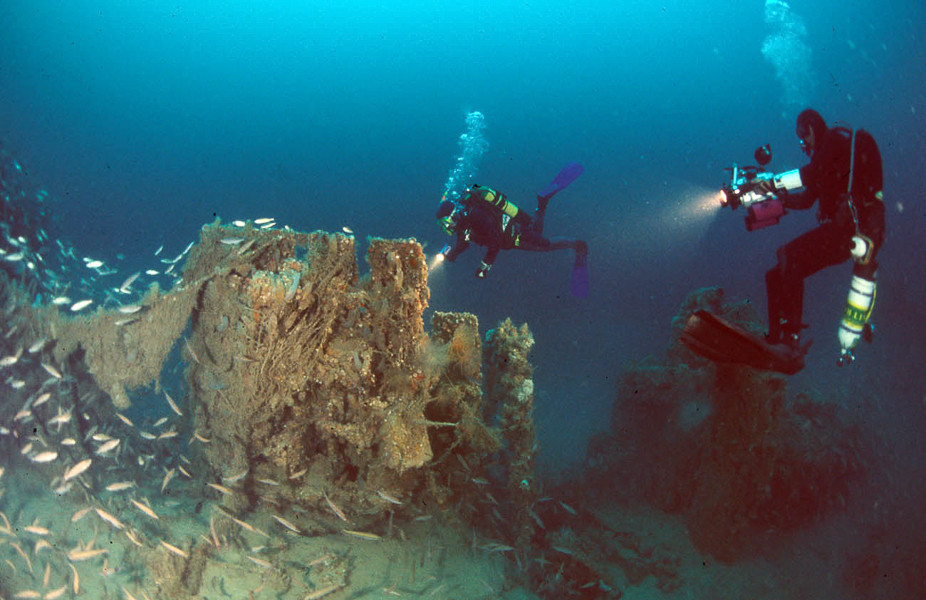
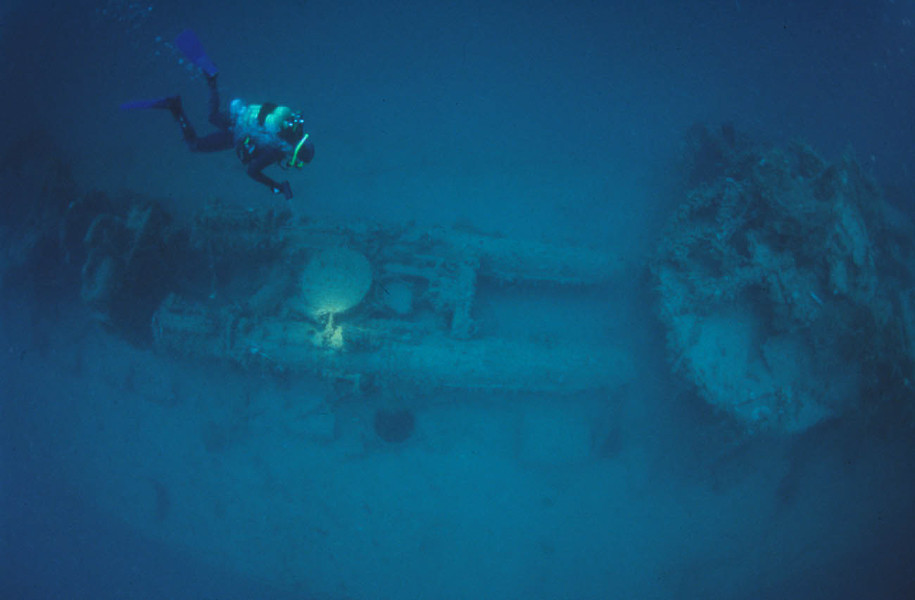
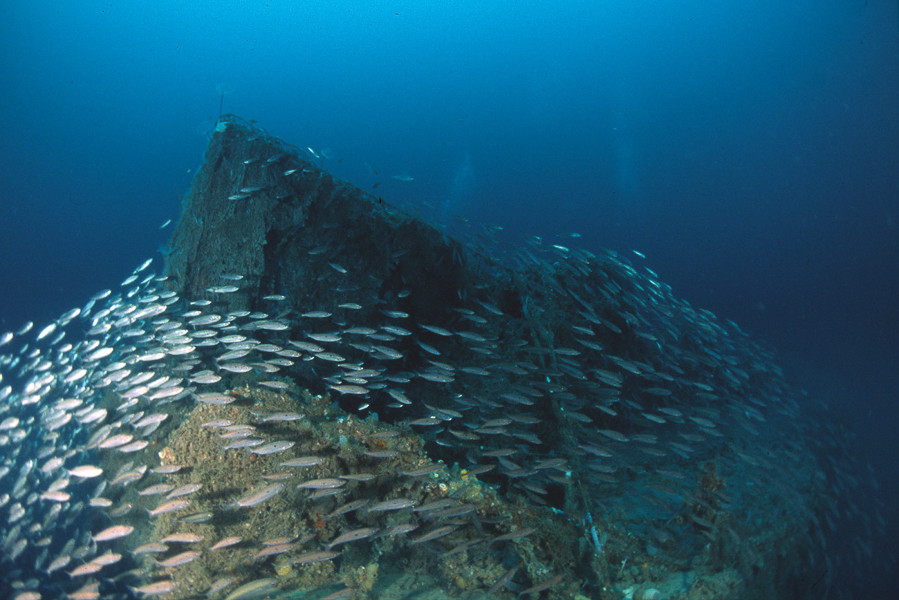
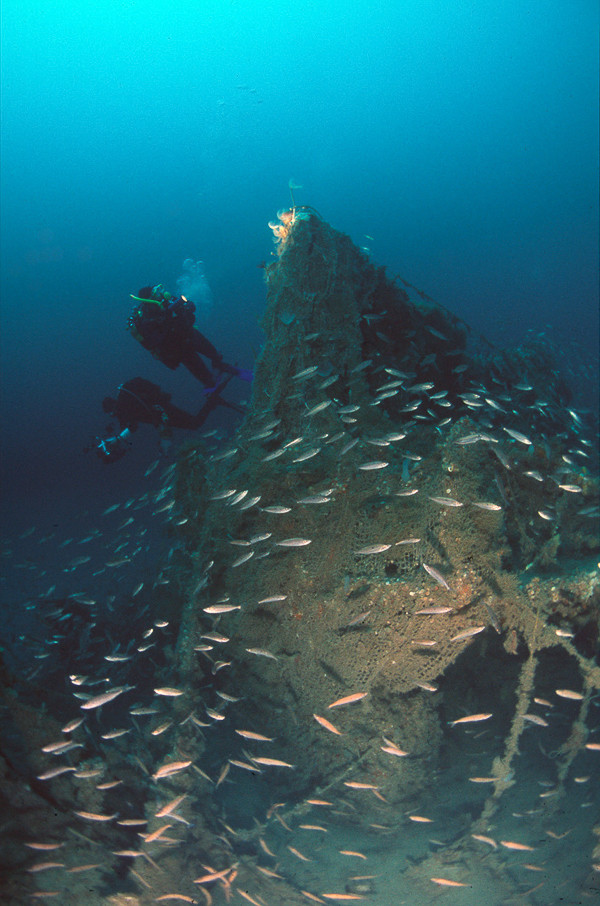
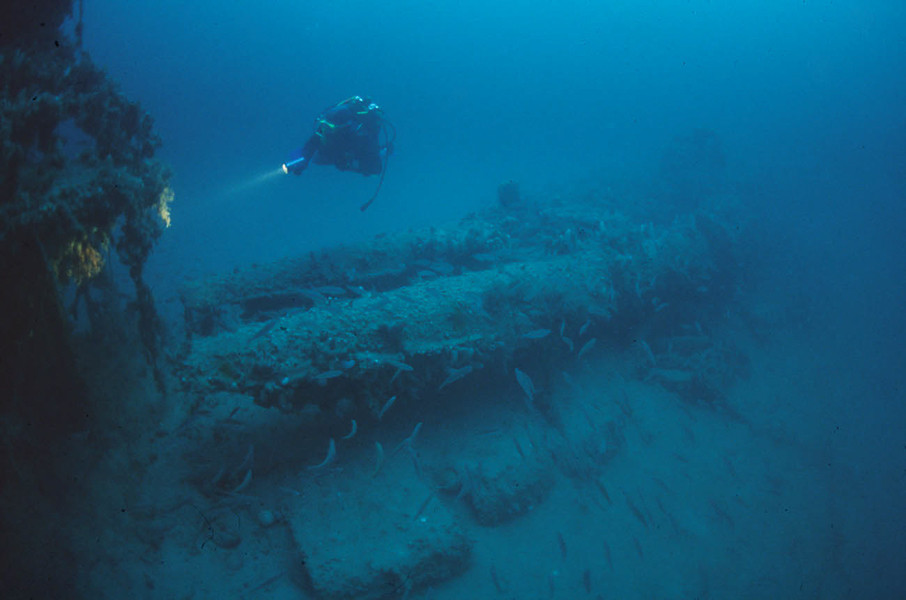
 The investment is co-financed by the Republic of Slovenia and the European Union from the European Regional Development Fund.
The investment is co-financed by the Republic of Slovenia and the European Union from the European Regional Development Fund.  H2O Globe BETA
H2O Globe BETA